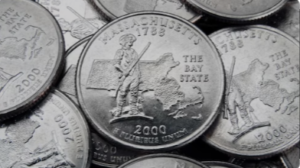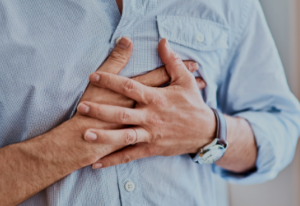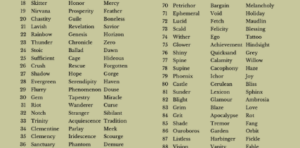How to Relieve Pain and Discomfort from Blisterata
Do you often find yourself wincing in discomfort from pesky blisters that seem to appear out of nowhere? Say hello to Blisterata – the unwelcome guest that can turn a simple stroll into a painful ordeal. But fear not, as we delve into the world of blister relief and prevention, arming you with natural remedies and expert tips to keep Blisterata at bay. Say goodbye to sore spots and hello to walking on air!
Understanding Blisterata and Its Causes
Blisterata, the bane of many active individuals, is more than just a nuisance on your feet. These fluid-filled bubbles are often caused by friction or pressure on the skin’s surface. Whether from ill-fitting shoes rubbing against your heels or moisture trapped between layers of skin, blisters can bring discomfort and pain.
Understanding the root causes of Blisterata is crucial in effectively managing and preventing them. The body’s natural response to protect underlying tissues from damage leads to blister formation as a defensive mechanism. Additionally, factors like repetitive motion, heat, and even certain medical conditions can contribute to their development.
By grasping the triggers behind Blisterata, you can take proactive steps towards alleviating their symptoms and avoiding future flare-ups. Stay tuned as we explore natural remedies and practical solutions to bid farewell to blister blues!
Natural Remedies for Relief
When it comes to finding relief from the discomfort of Blisterata, natural remedies can be a soothing and effective option. One popular remedy is soaking the affected area in warm water mixed with Epsom salt. This can help reduce inflammation and promote healing.
Another natural solution is applying aloe vera gel directly onto the blister. Aloe vera has anti-inflammatory properties that can help alleviate pain and speed up the healing process.
Tea tree oil is also known for its antiseptic properties, making it a great natural remedy for blisters. Dilute tea tree oil with a carrier oil like coconut or olive oil before applying it to the blister to avoid skin irritation.
Applying honey onto the blister can help create a protective barrier against infection while also promoting healing thanks to its antibacterial properties. These natural remedies offer gentle relief without harsh chemicals or side effects.
Over-the-Counter Solutions
When it comes to dealing with the discomfort of Blisterata, there are various over-the-counter solutions available that can help provide relief. Products like blister pads or cushions can be applied directly to the affected area to reduce friction and pressure on the blister. These pads create a barrier between your skin and your shoes, allowing the blister to heal without further irritation.
Another popular option is using hydrocolloid dressings, which work by absorbing any excess fluid from the blister while providing a protective cushion. These dressings promote faster healing and can also help alleviate pain associated with blisters.
For those looking for quick pain relief, topical creams containing ingredients like lidocaine or benzocaine can temporarily numb the area around the blister, offering temporary comfort. It’s essential to follow the instructions carefully when using these products to ensure safe and effective treatment for your Blisterata.
Preventing Blisters from Forming

When it comes to preventing blisters, there are a few simple steps you can take to keep your skin happy and healthy. First and foremost, make sure your shoes fit properly. Ill-fitting footwear is a common culprit for causing friction and rubbing that lead to blisters.
Consider wearing moisture-wicking socks to help keep your feet dry and reduce the chances of blister formation. Additionally, using lubricants or specialized blister prevention products on areas prone to rubbing can create a protective barrier.
If you know you’ll be engaging in activities that typically cause blisters, such as long hikes or running marathons, preemptively apply adhesive bandages or moleskin padding to potential trouble spots on your feet. Remember, prevention is key when it comes to keeping blisterata at bay!
Proper Care for Existing Blisters
So you’ve got a blisterata situation on your hands – what’s next? Proper care for existing blisters is essential to prevent further discomfort and potential infection. The first step is to resist the urge to pop or pick at the blister. This can introduce bacteria and increase the risk of infection.
Instead, gently clean the area with mild soap and water, then cover it with a bandage or moleskin to protect it from friction. If the blister breaks on its own, clean it carefully, apply an antibiotic ointment, and cover it with a sterile bandage.
To promote healing, try not to put pressure on the blistered area whenever possible. Opt for comfortable shoes and avoid tight clothing that could rub against the affected area. With proper care and attention, those pesky blisters will soon be nothing but a distant memory.
When to Seek Medical Attention
If you notice signs of infection, such as increased pain, redness, warmth, or pus draining from the blister, it’s time to seek medical attention. Infections can escalate quickly and require prompt treatment by a healthcare professional. Additionally, if you have blisters that are large, extremely painful, or recurrent despite home remedies, consulting a doctor is wise.
Individuals with underlying health conditions like diabetes or compromised immune systems should be cautious when dealing with blisters. Seeking medical advice early on can help prevent complications and ensure proper healing. Furthermore, if you develop a fever along with blister formation or experience severe swelling in the affected area, do not hesitate to reach out to your healthcare provider for guidance.
Remember that seeking timely medical attention for persistent or worsening blister symptoms is crucial in preventing further discomfort and potential complications.
Living Comfortably with Blisterata
Living comfortably with Blisterata is possible by understanding its causes, utilizing natural remedies or over-the-counter solutions, and taking preventative measures. Proper care for existing blisters can help alleviate pain and discomfort, but knowing when to seek medical attention is crucial for severe cases. By following these tips and being proactive in managing Blisterata, you can minimize its impact on your daily life and continue to enjoy all the activities you love without being held back by blister discomfort. Remember that it’s essential to prioritize self-care and address any concerns promptly to ensure your well-being while managing Blisterata effectively.













Post Comment